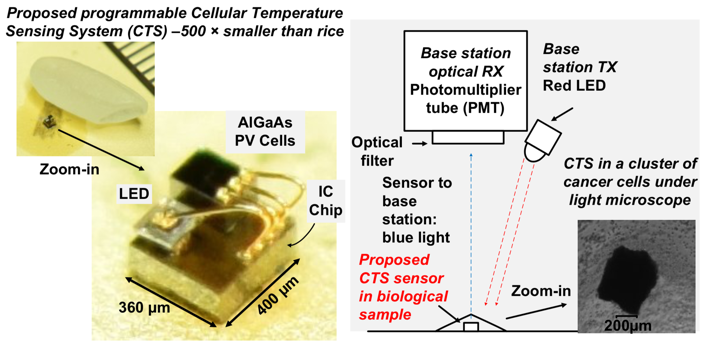Battery-Less Bioelectronic Implants
Miniaturized wireless bioelectronic implants will provide powerful capabilities to accelerate basic biological research and improve clinical therapies for human disorders. By virtue of their small size and wireless interface, these tiny devices have the potential to provide less invasive, longer lasting interfaces to tissue like the brain or peripheral nerves. One of the fundamental challenges in developing theses implanted bioelectronics is wireless power and data transfer (WPDT) to devices inside the body. We are particularly interested in realizing the potentials of Magnetoelectric and Optical WPDT technologies. We have successfully demonstrated such in-vivo untethered implants for sensing and stimulation. Particularly, we presented the first-of-its-kind implantable hardware platform coupling magnetoelectric transducers and CMOS chips in ISSCC 2020.
Wireless Endovascular Nerve Stimulation with a Millimeter-Sized Magnetoelectric Implant [Nature BME 2022]
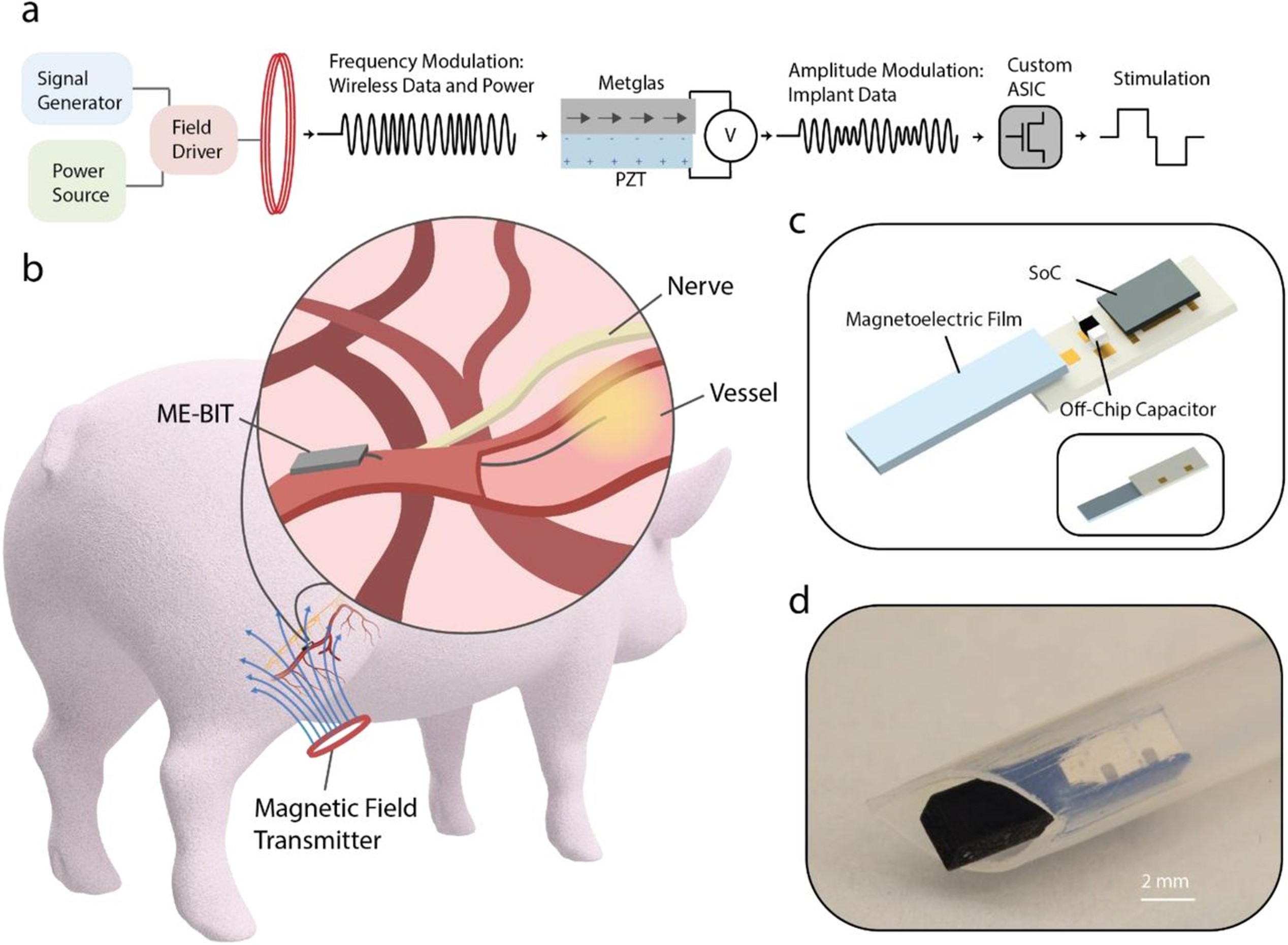
A Wireless Network of 8.8mm3 Bio-Implants Featuring Adaptive Magnetoelectric Power and Multi-Access Bidirectional Telemetry [RFIC2022]
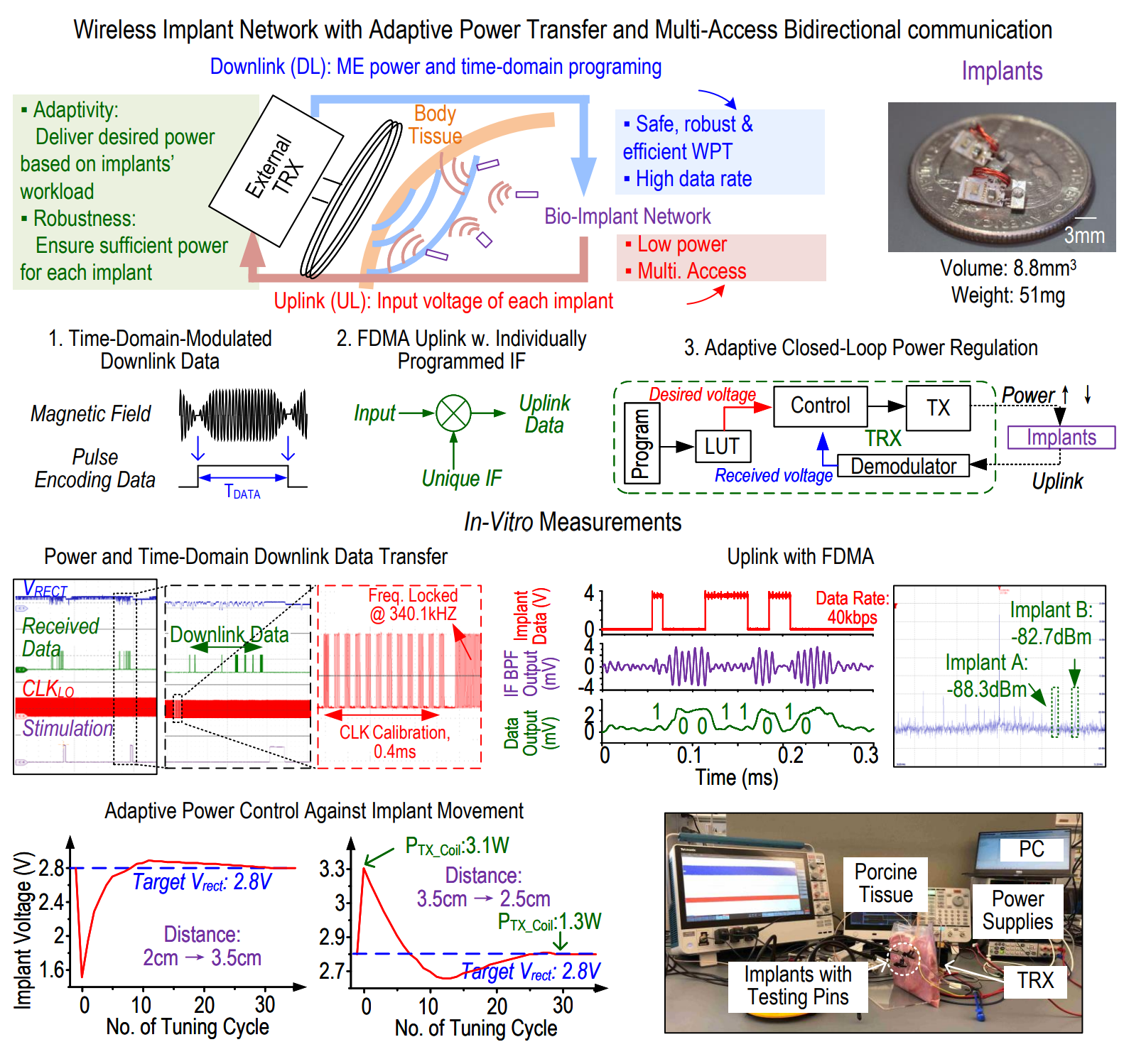
Multisite bio-stimulating implants magnetoelectrically powered and individually programmed by a single transmitter [CICC2021]
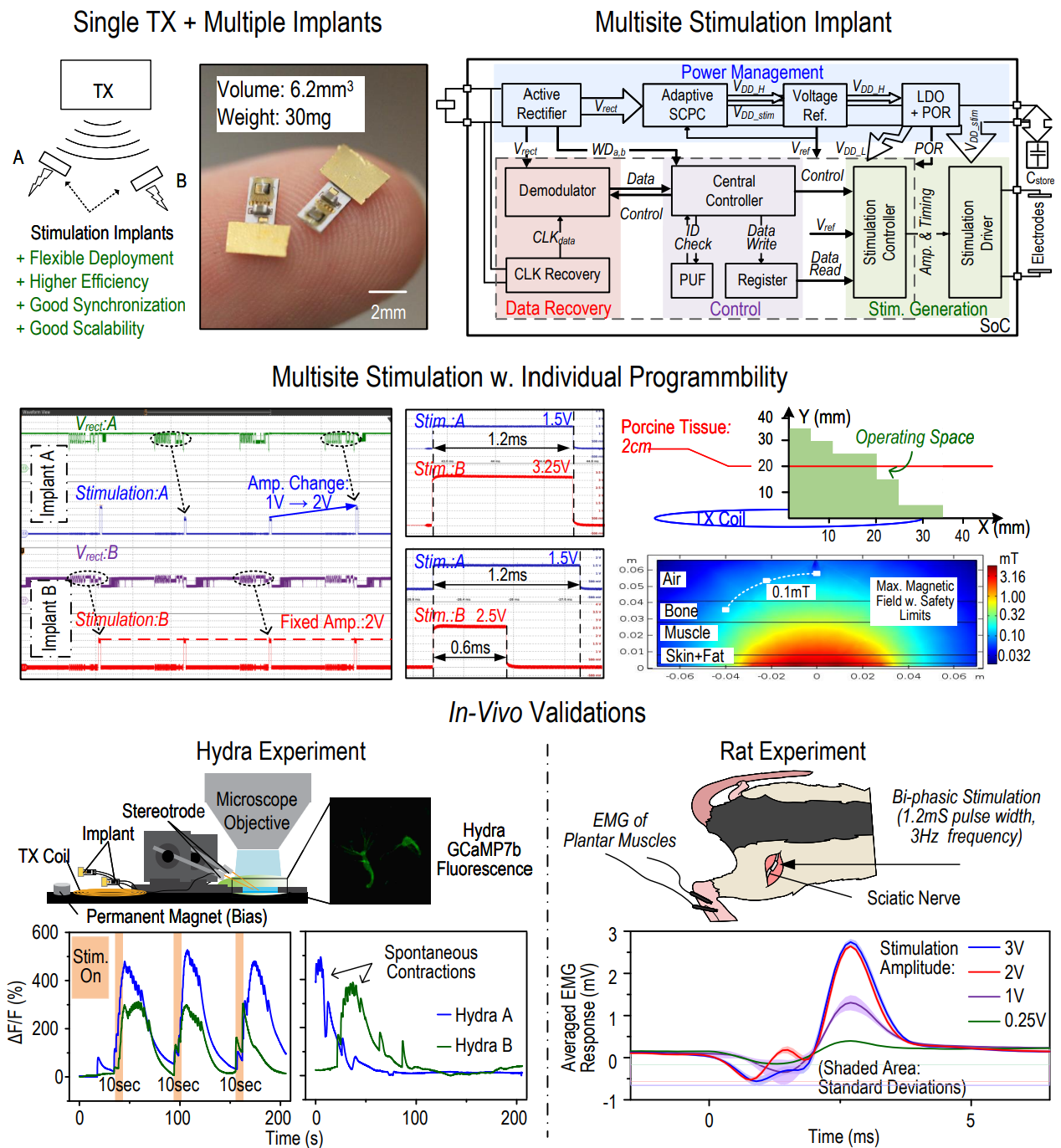
A magnetoelectrically powered and controlled implantable neurostimulator [ISSCC20]
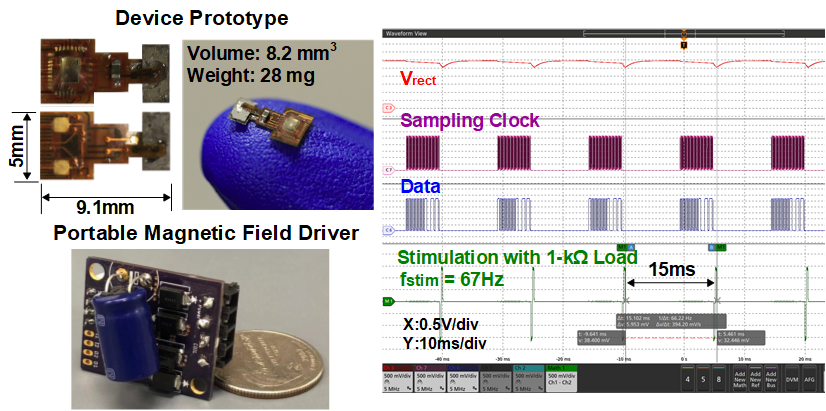
A 0.04-mm3 16-nW Wireless and Batteryless Cellular Temperature Sensor Platform [VLSI18]
